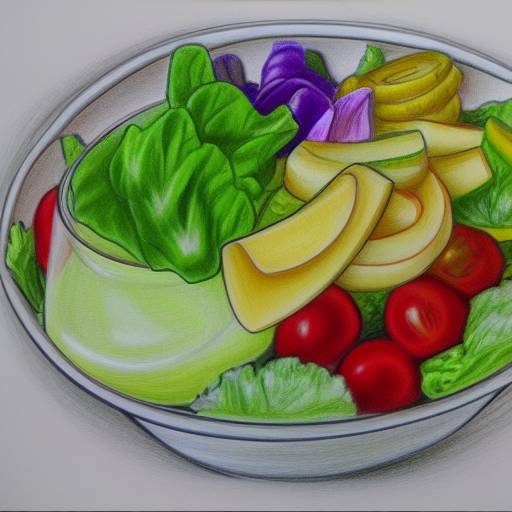Salad dressing is a type of sauce that is often found on salads. It is commonly used on leafy salads but may also be found in bean and noodle salads. It is also found in some types of potato salad and antipasti dishes. There are many different types of salad dressings.
Healthy salad dressing recipes
Healthy salad dressing recipes can be easily made at home using basic ingredients. These ingredients include oil, vinegar, or lemon or lime juice, honey, and a little bit of dijon mustard. They also work well with most salads and can be made within minutes. For a more complex dressing, you can add other ingredients such as garlic, basil, and herbs.
Most healthy salad dressings can last for a few weeks in the refrigerator, and you can easily store them in a Mason jar. You should shake them well before using them, since the ingredients may separate in the jar. Make sure to refrigerate them when not in use, as they may become too thick if they have been sitting for too long.
Healthy salad dressing recipes can be sweet, tangy, or creamy. The key is to use clean ingredients. Most store-bought salad dressings are loaded with processed white sugar and low-quality oils. This can turn a healthy salad into a fatty meal. In addition, these salad dressings tend to be pricier than the healthy versions.
If you are looking for an extremely healthy salad dressing, consider making your own. These homemade dressings can be a great way to incorporate more vegetables and healthy fats into your diet. Try using avocado in your homemade dressing. Avocado is a rich source of monounsaturated fats and may help raise your HDL (good) cholesterol.
Another easy way to make healthy salad dressing is to create your own vinaigrettes. These are simple recipes that don’t contain sour cream or mayonnaise. You can also use citrus juice or guacamole to add flavor to your salad. Also, try adding yogurt or hummus to your dressing.
Many store-bought salad dressings are loaded with omega-6 oils and preservatives, so making your own dressings is a great way to get more of these healthy fats into your diet. Start by whisking an egg yolk on low speed and then slowly add in the oil. Try not to use chilled eggs as they don’t mix well with the oil. This will reduce the smoothness of your dressing.
Healthy salad dressing recipes are easy and cost-effective to make. Salads are an excellent way to increase your veggie intake. Using homemade dressing is not only more healthy than premade dressings, but you’ll have greater control over the ingredients. Healthy salad dressing recipes can double as marinades for seafood, chicken, or vegetables.
Ingredients in salad dressings
A salad dressing may include various ingredients. The first is the liquid, which is usually made with oil and vinegar. Another common ingredient in salad dressings is fruit. Its fruity flavor may be offset by the use of sugar. Balsamic vinegar has a particularly sweet taste, and it is often used in fruit-based dressings.
Vegetable oils are also often included. These are high in omega-6 fatty acids and can contribute to inflammation. Furthermore, most of these oils are genetically modified. For this reason, they are not recommended for your health. However, there are a few brands that contain no or very little oil.
One of the most important things to consider when making salad dressings is the consistency. The consistency of the dressing is crucial in coating the salad evenly. Fortunately, Silva’s product line is vast, allowing you to fine-tune the flavor and texture to your liking. Besides a large selection, many products also have custom sizes.
A simple homemade dressing can be made from avocado, which is a good source of monounsaturated fats. Avocado can also boost the levels of HDL (good) cholesterol. Its tart and citrus flavor is a great complement to salads, and can also help spruce up more savory dishes.
In the current market, consumers are increasingly interested in healthy foods. As a result, the salad dressing industry is growing. Salad dressings are food emulsions and have to be uniform, physically stable and able to impart the desired textural properties. As a result, they are often fortified with novel, healthy ingredients and packaged in a way that minimizes lipid oxidation.
Another popular ingredient in salad dressings is mustard. It’s not only versatile but also adds a subtle tang to the dressing. Among the most common mustards are Dijon mustard and grainy brown mustard. These pair well with aromatic seasonings, especially shallots. Fresh herbs are another common ingredient. They help balance heavy cream based dressings and also pair well with freshly squeezed lemon juice.
A salad dressing can be thick or thin, but the right balance of these two components is key to achieving the right consistency. Generally, three to four parts oil and one part acid makes a thick dressing. However, the exact proportions depend on the salad dressing recipe. One common mistake is adding too much oil, which will result in a split vinaigrette.
Types of salad dressings
There are many different types of salad dressings. Some are based on vinegar, oil, or fruit juices. Others are creamy and use sour cream or yogurt as a base. Honey mustard salad dressing is a popular option because of its mild flavor. A blend of both types of dressings is a great way to add some healthy, fresh flavor to your salad.
In addition to dressings, you can also find sauces for salads. Salad dressings are often liquid at room temperature, and they can be made using cooking oil, which is a purified plant fat. Some common types of vegetable oil include olive, soybean, canola, peanut, and grape seed oil. Although these oils are edible, they do not have the same shelf-stable properties as mayonnaise.
Salad dressings can vary greatly in flavor, consistency, and other attributes. Some are thicker and tangier than others. They contain different types of ingredients, including olive oil and balsamic vinegar. Some are best stored in the refrigerator, while others are better frozen. It’s important to choose salad dressings carefully, though, since they can spoil quickly.
One classic salad dressing is blue cheese dressing. It is thick, contains bold cheese flavors, and adds a tangy taste from vinegar. The dressing is popular in the US and can be used to coat a variety of vegetables. It complements bacon and egg, as well as salads that are made with raw vegetables.
Salad dressings can also include a variety of optional ingredients. Some may be dairy-based, egg-based, or vegetable-based. Some may also contain emulsifiers or dairy powders. To add body to a dressing, fat replacers, sugars, and salts may be added.
Cream-based dressings are typically made from mayonnaise or other fermented dairy ingredients like yoghurt and buttermilk. This is the most popular salad dressing in the US, while vinaigrettes and Caesar-style dressing are second and third. Whether you are making a homemade or store-bought dressing, make sure to use high-quality ingredients to create the perfect dressing.
Health benefits of salad dressings
Salad dressings can boost your diet by adding a delicious and nutritious twist to any salad. There are many types of salad dressings available, with two main types being vinaigrette and cream-based dressings. Vinaigrette dressings are traditionally made with mayonnaise, but you can also use Greek yogurt or avocado. They are generally tangy in flavor, and are generally used on green or fruit salads.
But bottled salad dressings can contain added sugar and may contribute to weight gain and insulin resistance. Using homemade salad dressings can help control the amount of sugar in your diet, and improve your overall health. And if you’re not sure whether or not to use a bottled dressing, read the label carefully.
Lighter varieties are available, and include Greek or plain yogurt as an ingredient. Yogurt provides the right amount of acidity, and is lower in calories, fat, and sodium than traditional dairy ingredients. It also has a good amount of protein and probiotics. Another good choice is oil-free balsamic dressing, which can be bought at Whole Foods Market.
Although salad dressings have a number of health benefits, manufacturers can make misleading claims about their nutritional value. For example, some claim to contain omega-3 ALA, but this isn’t true. In fact, you can get the same amount of omega-3s from canola oil or soybean oil. You can also boost your omega-3 intake by adding fish, nuts, seeds, or whole grains to your salad.
Aside from adding flavor, salad dressings can also help you cut down on sodium. Too much sodium may lead to high blood pressure and heart and kidney problems. Also, too much fat can cause obesity and fatigue. So, choosing the right dressing is essential for your health. And don’t forget to experiment with different flavors.
Most salad dressings contain unsaturated fats, which are good for the heart. They help lower “bad” cholesterol levels in the body and keep you feeling full longer. It also helps you resist the urge to overeat. Some also contain herbs and spices.











